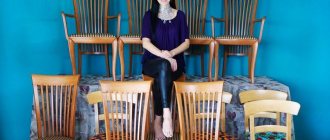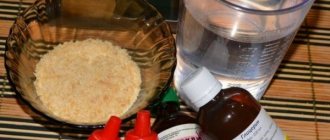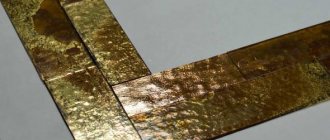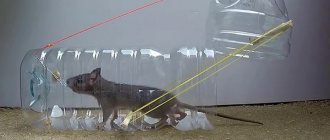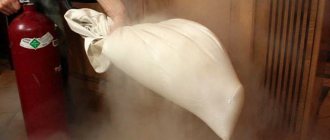Restoration of an icon is simply necessary if it is very old and has lost its original appearance over time. This is especially true for family heirlooms that are passed on from one generation to the next.
Over time, images become more fragile and can deteriorate from sudden temperature changes, high humidity or dry air. Old icons, the restoration of which can be carried out independently or entrusted to a specialist, should be stored carefully even after this procedure so that these problems do not arise so quickly in the future.
Common problems
Restoring an icon is a very serious and responsible step. If you are not confident in your abilities, it is better to leave it to professionals. It is also very important to promptly and correctly recognize a particular problem.
The most common ones are:
- the board dries out under the influence of dry air;
- cracks appear;
- deformation;
- the paint begins to crumble;
- under the influence of humidity, the image becomes covered with mold or mildew.
It is necessary to correctly identify the degree of damage, and this will require timely restoration of the icon, so as not to lose it altogether later. Often there are problems with the setting of the image, which over time oxidizes and turns green, which significantly spoils the appearance of the icon. In this case, you cannot remove it yourself, since clumsy actions can cause even more harm.
Many experts believe that restoration of an icon at home by untrained people cannot be carried out efficiently, therefore, if you do not have such experience, it is better to give the shrine to professionals. If you have done this at least a little before, you can try to put it in order yourself.
The most effective ways
You can effectively clean brass using oxalic acid, which removes the most obsolete contaminants and oxides. However, it is recommended to use personal protective equipment (goggles and gloves). Step-by-step instruction:
- In a plastic container, mix 25 grams of the substance per liter of water.
- Wet a soft sponge in the solution and treat the alloy parts.
- Rinse the metal after 15 minutes under running water.
- Wash off the acid again with a solution of soap at a temperature of 30°C to 40°C.
Oxalic acid is found in many cleaning products. To remove traces of corrosion and rust, do the following:
- the solution is applied to the damaged area;
- wait up to 30 minutes, during which you can observe increased darkening of the contamination;
- carry out the treatment using brushes previously soaked in water;
- sprinkle the damaged area with baking soda and remove any remaining dirt with a rag;
- Rinse under water and wipe with a dry cloth.
Working solutions
Do-it-yourself restoration of icons is carried out through the use of special emulsions. Each of them has its own purpose:
- fish glue is used for fixing the paint layer, restoring wooden parts of icons and for preventive gluing;
- beeswax dissolved in gasoline helps to process the ends of the wooden part of the structure;
- Wax mastics of different contents are used for peeling paint and for soil sagging. With their help, the wooden part is restored and cracks are sealed;
- an alcohol solution is used to strengthen images that have been lying in a damp room for a long time;
- DDT solution helps when the icon is affected by insects;
- an emulsion based on water and yolk strengthens the paint when peeling in the form of blisters;
- an aqueous surfactant solution is used to clean dirt on the surface of the icon.
Useful tips
To preserve the relic in its pristine beauty for a long time, follow simple rules:
- do not allow stagnation of humid air in the room;
- protect icons from direct sunlight;
- place burning candles no closer than 15 cm from the image;
- Maintains an even temperature in the room without sudden changes.
It should be remembered that the water used to clean the icon cannot be poured into the sink. To do this, use a place on the street where no one walks.
Of course, a complex restoration cannot be accomplished by an amateur. But careful care is sometimes enough to extend the life of heirlooms.
Features of preventive sealing
The restoration of ancient icons also includes a stage that is a temporary solution for the conservation of certain deformations in order to prevent their subsequent development.
So, the sealing is applied for a period of one month to 3 years, it all depends on the degree of damage to the product and the conditions of its storage. The period cannot be exceeded, otherwise the icon may suffer additional damage. If there is a need to extend it, the adhesive must be changed.
This process is carried out using special working solutions of alcohol and tissue paper. Any other types of it can cause severe shrinkage and tear off the already weak soil. The work is carried out with a wide bristle brush, a roller and a damp swab.
If there is mold on the surface, the sealer should be applied only after alcohol treatment. The paper should be cut into small sheets, the size of which depends on the degree of destruction of the icon and its type. Glue is applied to the surface with a brush so that it is all covered evenly, and a lot of glue is not needed. The main thing is that after drying, a film does not appear, which can cause peeling of the paint.
Cleaning icons made of different metals
Repairing an icon is not an easy task, but it is doable. To minimize the risk of new damage, home restoration should be carried out with the utmost care.
How to clean copper icons, as well as silver, gold and bronze:
- Tooth powder is great for cleaning copper coins and relics. Copper, gold and silver heirlooms are difficult to clean, especially if they have carved textures. For proper washing, special products are sold that are used to treat jewelry made of all kinds of metals. To clean copper products, use Goya tooth powder or paste.
- To make silver and gold images shine, you need to use alcohol and vodka, previously diluted. Specialists clean the icons with cotton swabs soaked in a solution. To check whether the prepared mixture will harm the relic, it is recommended to coat the area that is almost invisible. If the varnish or paint has not come off, you can safely wipe the product.
- There are combined icons, for example: wood and metal. In this case, barrel tomatoes and cranberries will help. In order not to spoil the image, washing should be done without haste and carefully. First, cranberries and sour tomatoes are applied to the metal, then the dirt begins to come off from the metal surface, and then it is wiped with a dry cloth. The procedure is carried out over and over again until all the dirt is washed away and the metal becomes light.
- The surface of the relic is well cleaned with ammonia. Take a regular brush, which is used by artists, and then the solution is applied to the entire surface of the icon. Its owner must wait some time and wipe the church item with a dry cloth. When finished, use a hairdryer to dry, but at the lowest power, since the flow of hot air can damage the image.
- Gold items are cleaned with acetic and citric acid. If the icons are made of bronze or copper, then the acid is slightly diluted with water. After cleaning the surface, you will need a dry cloth.
Experts categorically do not recommend washing church items with kitchen detergents. You should not use hard powders and so on, since the surface may be scratched during the washing process.
How to strengthen primer and paint
Restoration of an icon may include strengthening measures. After all, its parts are susceptible to cracking, soil lag and damage, scratches, mold, cracks, burns and much more.
To fix the paint in case of peeling or swelling, you need to treat the surface of the icon with alcohol using a soft brush. The movements should be smooth, and make sure that there is a lot of solution, otherwise the fragments of the paint layer of the artistic part may move with each other, and you will damage the image.
Impregnation must be repeated if the alcohol is absorbed strongly. After about half an hour, saturate the strengthening areas with fish glue using a brush. Remove any remaining alcohol from the peripheral part with a damp swab.
Saturate the surface with glue so that it is evenly saturated with it. Depending on the speed of absorption, the work will take up to 20 minutes.
After a couple of hours, apply a prophylactic seal with fish glue and press it with a wrung-out swab. If there are long, hard blisters of paint, they should be laid out with a fluoroplastic spatula.
Another half hour after gluing, iron the surface with a warm iron through filtered paper and fluoroplastic. It must be removed after 10 days. To do this, moisten the area with a warm cotton wool and gauze pad so that everything warms up a little.
What is brass and where is it used?
Brass is an alloy of copper and zinc. The material contains elements such as manganese, tin, aluminum and lead particles, which change the characteristics and color shades of the metal. Zinc was discovered in the 16th century, but brass was discovered in ancient times. The metal was obtained by melting copper and zinc-containing ore.
When making the alloy, up to 30% zinc is added to the composition, but to improve technical characteristics, up to 50% metal is added. Brass practically does not wear out and is used in the manufacture of automotive spare parts, serpentine elements, heating radiators, as well as stamped parts and various accessories. Alloy brass is used for the production of aircraft, ships, watch parts and main pipes.
Using tombak (an alloy with a zinc content of no more than 10%) insignia is made. To protect elements from corrosion, cast brass is used. It is used to manufacture bearings, shut-off valves, and separators. Thanks to the properties of the alloy, compasses and heating radiators are produced. Cleaning of brass is carried out without the use of additional equipment and special products.
The metal is used in jewelry in the manufacture of costume jewelry, as well as counterfeit gold jewelry. The alloy content of up to 15% zinc and the addition of 5% aluminum allows you to obtain a material similar to precious. This condition is used when making frames for icons, as well as other items in churches.
How to remove surface contaminants
Restoring home icons rarely involves professional and painstaking work, because not everyone can prepare a special cleaning solution and perform high-quality sealing when necessary.
But even a person without special skills can remove dirt from the surface of the image. After all, icons, unfortunately, collect dust and other dirt over time.
Storage rules
Proper care will ensure long-term storage of family value. Therefore, in order to avoid having to restore the paintwork and wipe off soot from the icon, it is recommended to store relics only in the appropriate places and follow simple rules. Recommendations from experts on caring for icons:
- Lighted candles should be placed only at a distance of 20 cm from the image.
- As a rule, icons are installed in the corners of the room and far from radiators, window openings, and so on. In this case, mold will not occur, since air circulation will be constant.
- All churches have stained glass windows because the sun's rays slowly destroy the icons. Therefore, family valuables should be kept away from windows.
- Also, there must be a minimum concentration of moisture in the house or apartment. If it is high, then after a while a fungus will appear on the face.
- The paint coating on the front side cannot be treated with alcohol varnish.
- Lye and washing powders are not suitable for washing church supplies, especially for icons.
- Washing with water can lead to the destruction of the icon. In this case, the paintwork will appear with whitish spots. Such care will not lead to anything good.
- Dust is removed with a brush or soft cloth.
- If there are frequent temperature changes in the room where the icons are located, the paint on the icon will crack and the wood will swell. Loss of original appearance is guaranteed. Therefore, it is better to install the icons in another room or fix the problem.
- Flies crawling along the surface of the face leave “spots” (bulges) on it. They cannot be scraped off because they are partially absorbed into the paint layer and can fly off with the paint during mechanical cleaning. In this situation, only a restorer can help.
By following simple rules, the icon can be preserved not only by children, but also by grandchildren and great-grandchildren. If small cracks have formed in the image, you should urgently go to a church restorer or other experienced specialist. To get detailed advice, you should visit a church and get advice from experienced people. One of the duties of true believers is not only keeping the commandments, but also carefully storing icons and other sacred church utensils.
Conversation with restorer Viktor Kapitanchuk
Viktor Afanasyevich Kapitanchuk is a chemist by training (graduated from the Faculty of Chemistry of Moscow State University) and it was as a chemist that in 1971 he was invited to work at the Research and Restoration Center named after. Academician I. Grabar, where he worked for almost 20 years. Communication with restorers bore fruit, and when Viktor Afanasyevich was forced to stay at home for a long time due to a serious illness, he became interested in restoring icons and icon painting. And then, by God's Providence, he was brought to Father Artemy Vladimirov in the temple in Krasnoe Selo. Here he worked for 21 years as an icon painter and restorer, head of an icon painting and restoration workshop. "Happy time!" – Viktor Afanasyevich speaks about this service of his. As a professional chemist, restoration practitioner and icon painter, he knows many of the secrets of icons. And therefore, his advice on how to handle and care for icons, what to do if the image is already damaged, and what should never be done, will be especially useful to our readers.
– Icons that had suffered from mishandling were given into your hands. What basic things does the owner of a painted icon need to know so as not to spoil it?
– No harsh influences: solvents, cleaning products. Do you know how icons used to be cleaned? Crushed bricks, sand!
- A daring idea...
– Can you imagine what was left? Or they cleaned the icons with ash, that is, an alkaline solution.
It is very harmful when an icon is cleaned without removing the frame. Cleaning agents get clogged into crevices, harden, and are then difficult to remove.
